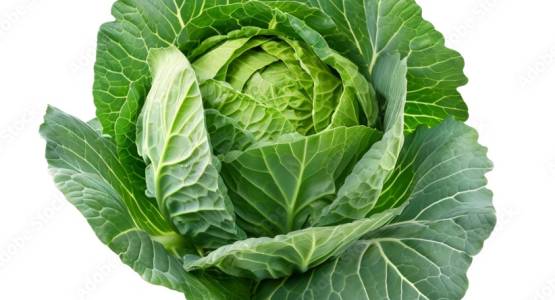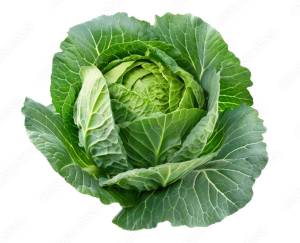A Guide to Growing Cabbage in a Greenhouse


In this guide to growing cabbage in a greenhouse we discuss how growing cabbages offer gardeners a unique opportunity to produce healthy, flavourful cabbages all year round. Cabbages, though hardy, benefit greatly from the controlled environment of a greenhouse, where temperature and humidity can be managed to ensure optimal growth. Whether you’re just starting out or looking to improve your vegetable gardening, this guide will provide you with tips on choosing the best cabbage varieties, caring for your plants, harvesting techniques, common pests, and recipes that highlight the health benefits of home-grown cabbage.
Why Grow Cabbage in a Greenhouse?
Growing cabbage in a greenhouse offers several advantages over outdoor cultivation. The UK’s unpredictable weather can cause problems for cabbage, such as frost damage, pest infestations, or stunted growth due to prolonged rain or cold. A greenhouse helps regulate these environmental factors, providing a more controlled and stable atmosphere.
Benefits of Greenhouse-Grown Cabbage
Temperature Control: Cabbage can tolerate cooler temperatures, but seedlings and young plants thrive when they are shielded from extreme weather conditions. Greenhouses provide warmth during cooler months and allow early sowing or extended harvesting times.
Protection from Pests: A greenhouse creates a physical barrier between your cabbages and common pests like cabbage root fly and slugs, giving your crops a better chance of survival without the heavy use of pesticides.
Year-Round Growth: With the aid of a greenhouse, you can grow cabbage almost year-round, especially if you start seedlings in the warmth of the greenhouse and transplant them into cold frames or raised beds once they are more established.
Choosing the Best Varieties of Cabbage
Several cabbage varieties are well-suited to greenhouse cultivation. When selecting the right variety, consider the growing season, taste preferences, and how you intend to use the cabbage. Here are some varieties to consider:
- ‘Hispi’ (Pointed Cabbage)
- A popular early variety in the UK, ‘Hispi’ is known for its tender, sweet leaves and relatively quick maturity (about 65-75 days). This pointed cabbage is ideal for fresh use in salads or light cooking.
- ‘January King’
- As the name suggests, this variety is perfect for winter harvesting. ‘January King’ is a hardy semi-savoy type with purple-tinged leaves. It has excellent cold tolerance, making it a great choice for winter greenhouse growing.
- ‘Minicole’
- ‘Minicole’ is a compact cabbage variety that produces small, round heads, perfect for greenhouse growing due to its limited space requirements. It matures in around 70-90 days, making it an excellent mid-season variety.
- ‘Red Drumhead’
- A beautiful red cabbage variety, ‘Red Drumhead’ is perfect for both fresh use and pickling. The deep purple leaves offer a striking appearance in the garden and a nutrient boost in the kitchen.
- ‘Savoy King’
- For those who love the texture and flavour of savoy cabbage, ‘Savoy King’ is a versatile and hardy option. Its crinkly leaves make it ideal for winter soups, stir-fries, and stews.
How to Grow Cabbage in a Greenhouse
- Sowing Seeds

- Timing: For early cabbage, start sowing seeds in January or February inside the greenhouse. For winter cabbages, sow in May or June.
- Seed Depth: Sow seeds about 1.5 cm deep in trays or small pots filled with a quality seed compost.
- Germination: Keep the trays in a warm, sunny part of the greenhouse. Cabbage seeds typically germinate in about 7-14 days when kept at around 18-21°C.
- Transplanting Seedlings
Once seedlings have developed 3-4 true leaves, it’s time to transplant them into larger pots or directly into greenhouse beds. Space the plants about 45 cm apart to give them room to grow. If you’re planning to plant them outdoors later, this is when you’ll start the hardening-off process.
- Hardening Off: Over a week or two, begin moving your cabbage seedlings outside for a few hours each day, gradually increasing their time outdoors. This helps the young plants acclimatise to outdoor temperatures before full transplanting.
- Planting Out
Once hardened off, transplant the young cabbages into raised beds or cold frames. Raised beds offer excellent drainage and warm faster in the spring, giving your plants a head start. Cold Frames provide additional protection in early spring or late autumn when temperatures dip.
- Soil and Fertiliser
Cabbage prefers well-draining, fertile soil with a pH between 6.0 and 6.8. Before transplanting, enrich the soil with well-rotted manure or compost to provide the necessary nutrients. Cabbage is a heavy feeder, so a balanced organic fertiliser should be applied regularly during the growing season.
- Watering
Cabbages need consistent moisture, especially during head formation. Water regularly, making sure not to let the soil dry out. However, avoid waterlogging, which can lead to root rot.
- Mulching
Apply a layer of organic mulch around the base of the plants to retain moisture, regulate soil temperature, and suppress weeds.
Common Pests and Diseases
Even in the controlled environment of a greenhouse, cabbage can fall prey to several pests and diseases. Here’s how to tackle the most common problems:
- Cabbage Root Fly
Cabbage root flies lay eggs at the base of young plants, and the larvae feed on the roots, stunting growth. Use fine mesh or horticultural fleece to protect seedlings from adult flies.
- Cabbage White Butterfly
Cabbage white butterflies lay their eggs on cabbage leaves, and the resulting caterpillars can decimate plants quickly. Protect your plants with netting and inspect them regularly for eggs or caterpillars.
- Aphids
Aphids can infest cabbage leaves, sucking the sap and weakening the plant. Wash them off with a strong jet of water or use organic insecticidal soap to control infestations.
- Clubroot
This fungal disease affects the roots of cabbage, causing them to swell and distort. Prevention is key—ensure your soil is well-draining, rotate crops regularly, and choose clubroot-resistant cabbage varieties.
Harvesting Cabbage
Cabbages are typically ready for harvest 75-150 days after sowing, depending on the variety and growing conditions.
- When to Harvest
Harvest cabbages when they feel firm and solid to the touch. It’s best to harvest them in the morning when the leaves are crisp and full of moisture. Early varieties like ‘Hispi’ can be harvested in as little as 65 days, while winter varieties like ‘January King’ take longer but withstand the cold.
- How to Harvest
Use a sharp knife to cut the cabbage at the base, leaving the outer leaves intact to encourage a secondary crop of smaller heads. In colder months, it’s essential to harvest before the first hard frost to prevent damage to the heads.
- Storing Cabbage
Freshly harvested cabbage can be stored in the fridge for up to two weeks. For longer storage, cabbages can be fermented to make sauerkraut or stored in a cool, dark place like a root cellar.
Health Benefits of Freshly Picked Cabbage
Cabbage is a nutrient-dense vegetable that offers numerous health benefits. Growing your own cabbage ensures the freshest produce, packed with vitamins and minerals.
- Rich in Vitamin C
Cabbage is an excellent source of vitamin C, which supports immune health and aids in collagen production.
- High in Fibre
Cabbage is rich in dietary fibre, promoting healthy digestion and helping to maintain a healthy gut.
- Packed with Antioxidants
The antioxidants in cabbage, such as sulforaphane, help reduce inflammation and may lower the risk of chronic diseases like heart disease and cancer.
- Low in Calories
Cabbage is a low-calorie vegetable, making it a great addition to weight-loss diets while still providing essential nutrients.
Recipes for Home-Grown Cabbage
Once you’ve harvested your cabbage, it’s time to enjoy it in a variety of dishes. Here are a few ideas:
- Classic Coleslaw
Shred fresh cabbage and toss with a simple dressing of mayonnaise, vinegar, and mustard. Add carrots for colour and crunch, and you’ve got a quick, refreshing salad.

- Stuffed Cabbage Rolls
Use your home-grown cabbage leaves to make hearty stuffed rolls filled with rice, minced meat, or vegetables. Simmer the rolls in tomato sauce for a delicious, warming meal.
- Stir-Fried Cabbage
Sauté cabbage with garlic, soy sauce, and a splash of sesame oil for a quick, flavourful side dish that pairs well with any meal.
In conclusion, our guide to growing cabbage in a greenhouse allows UK gardeners to cultivate this versatile vegetable year-round, while protecting it from pests and unpredictable weather. With the right care, you’ll enjoy a bountiful harvest of delicious, nutrient-packed cabbage. Freshly picked cabbage not only tastes better but also offers numerous health benefits, making it a fantastic addition to your diet.
